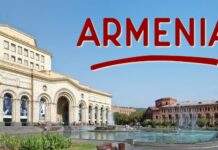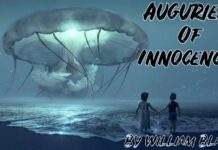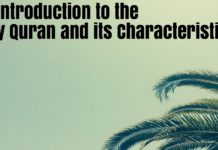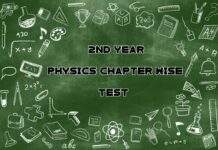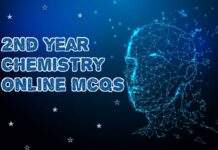Introduction
‘Full Moon and Little Frieda’ is a little sonnet from Ted Hughes‘ assortment called ‘Wodwo’ which was distributed in 1967. The assortment other than this sonnet incorporates some other notable famous sonnets like ‘Skylark’, ‘Thorns’, ‘Sugar Loaf’, ‘Gnat-Palm’, and ‘Still Life’. These are nature sonnets in which man is put comparable to the components that undermine him. Human life from the start gives off an impression of being lowered between basic powers, which later accomplishes an unobtrusive essentialness. In these sonnets, Hughes likewise utilizes the gadget of humanoid attribution that recommends a virtuous utilization of symbolism with which lifeless components or things wake up and act like living things and, obviously, similar to people.
This sonnet starts with a short and brief depiction of a chilly night with a little clear upheaval of “a canine bark” and “the thump of a pail”.

And who is tuning in to these dusk? sounds? Frieda and Nicholas were the little girl and children of Ted Hughes and Sylvia Plath. The sonnet portrays a virus evening scene in ..a field where there is some commotion of ‘a canine bark’ and ‘the thump of a container’. A night, a basin, a bucket, and dairy animals allude to the draining hour of the day.
A crowd of dairy animals in the field scene shows up strolling on a path. Their segment appears as though a waterway of streaming: blood as red is the shade of the bovines. At night. The haziness of the dark of the night and red of the cows converge to give the stream the shade of red. Each different bovine itself resembles an immense bit of rock moving, with milk inside and overseeing not to spill that milk.
In this dusk quiet night scene an unexpected boisterous cry of ‘Moon! Moon!’ pulls in out of nowhere. everybody considered a spellbinding and stunning marvel of nature showing up from a there skyline. Here the artist’s utilization of humanoid attribution loans life to the moon that turns into a craftsman wonder-struck at his own astonishing work of ‘evening workmanship’. Like a craftsman, the moon ventures back to have one more gander at his own creation and ponders perpetually.
The sonnet seems to have a country setting-one that of Hughes’ own local spot, Hughes may have visited when the entire family was together and little Frieda went with them. The plate of the rising full moon has its own entrancing impact on the tranquil night climate around.

Critical appreciation of “Full Moon And Little Frieda” By Ted
‘Full Moon and Little Frieda’ is one of the most popular poems of Ted Hughes. He called it a favorite of his own. The poet has compressed the whole evening into one long line. The evening is cool and small; small in the sense that in winter England and other British provinces practically have no evening. The noon hastens to meet night in one big leap and there is darkness everywhere.
The evening in the poem is a quiet one except there is occasional noise of ‘a dog bark’ and ‘the clank of a bucket’. The clank of buckets refers to the milking hour as sometime later in the poem we come across a herd of cows going home in a lane, balancing milk within their boulder-like huge bodies. Little Frieda, a child, is listening to the sounds disturbing the calm of the evening. The mirror of the watery surface in the paint makes a quivering reflection of the first star of the evening. The cows pace sluggishly home, impeding their own speed due to their size and weight.
Their long line in the darkness of evening resembles a slowly flowing dark river of blood. Blood is in fact the red of the skin color of cows, and the blood running in their bodies. The cows communally are a river and individually they are huge heavy boulders that impede their own speed. The child, Little Frieda, is the focus of the evening scene who under the calm and serene impression of the evening is observing the almost unearthly sight. She, attracted all of sudden by the glow of the full moon, expresses her joy, wonder, and awe by uttering thrice the word ‘moon’. Some critics argue there is humor in likening the communal walk of the cows to ‘a dark river of blood’ and comparing a cow to ‘a boulder’.
In the final two lines, the moon behaves with the human traits of an artist. The moon, the artist, steps back and looks at its own work of art with wonder to appreciate the beauty and magic of the scene created by elemental nature.
The moon’s ancient pagan divinity and its status of a deity attract the innocence and wonder of little Frieda in such a manner that she gives out a sudden cry: “Moon! Moon!”


Like many poems in ‘Wodwo‘ collection, in this poem man is placed against the elemental forces, benign or harsh. We feel while reading it about a mysterious web wrapped around things encircling human beings. Man is unable to understand all that. He can do nothing except react in a word or two joy, of wonder, of having like little Frieda.
The poem is, on several counts, a sonnet but it does not follow the conventional design of a sonnet. It also does not follow a regular thyme scheme. The use of monosyllables makes the flow of the lines slow. Its use is apt to paint a lazy line of a slow-paced herd of cows and difficult, labored movement of boulder-like huge, heavy cows.
The moon acquires an artist’s habit through its skillful use of anthropomorphism by Hughes. The moon steps back and looks in amazement at the beauty and awe a work of nature art creates. This device works wonders to take the reader back into the fairy work of childhood wonder and abandon. In that world animals, trees, mountains, and all the elements of nature behave like human beings. One can hope, that a child enjoys a poem like this one. A dark river of blood’ and ‘boulders’ are similes Hughes uses in his own peculiar way. They are more conceits than similes.
Critical Appreciation of ” That Morning” By Ted Hughes



